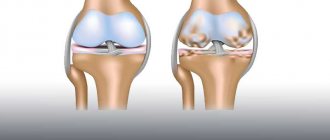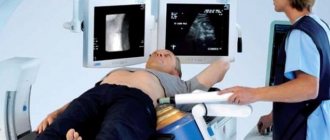Paget's disease is a dangerous pathology in which the restoration of bone tissue slows down, and an abnormal formation appears in its place. The disease can progress on any bones of the human skeleton and usually affects 3 or more bones. In the absence of timely diagnosis and prompt access to qualified medical help, treatment will be extremely difficult and will require a very long period of time.
Causes of the disease and risk factors
Paget cells, from which malignant tumors develop, are glandular cells derived from the epithelium of the milk ducts. The main theories of Paget's cancer development are epidermotropic and in situ transforming theories.
The epidermotropic theory, to which oncologists are more often inclined, is based on conclusions demonstrating that in the vast majority of cases Paget's disease occurs against the background of other forms of breast cancer (BC). According to this theory, cancer cells move along the milk ducts from the primary tumor to the nipple, where they attach and divide.
The transformative theory explains the development of Paget's cancer by spontaneous malignancy of epithelial cells of the nipple and areola. This is confirmed by the fact that in a certain percentage of patients with Paget's disease, no other breast tumors were found.
Risk factors:
- hereditary predisposition (often typical for cases of the disease in men);
- age over 60 years;
- excess weight;
- alcohol abuse;
- injuries and damage to the nipple;
- hormonal imbalances - early puberty, late menopause, infertility;
- concomitant diseases – scleroderma, cervical cancer;
- taking hormonal medications;
- contact with carcinogens (chemicals, radiation).
Recommendations
- ^ a b c
Paul Tuck, Stephen;
Layfield, Robert; Walker, Julie; Mekkail, Babita; Francis, Roger (December 2021). "Paget's disease in adults: a review." Rheumatology
.
56
(12):2050–2059. Doi:10.1093/rheumatology/kew430. PMID 28339664. - Ralston, Stuart H.; Layfield, Rob (29 April 2012). "Pathogenesis of Paget's disease of bone". Calcified Tissue International
.
91
(2):97–113. Doi:10.1007/s00223-012-9599-0. PMID 22543925. - Charles, Julia F.; Siris, Ethel S.; Rudman, J. David (2018). "Paget's disease of bone." Primer on Metabolic Bone Diseases and Disorders of Mineral Metabolism
. John Wiley and Sons. pp. 713–720. ISBN 978-1-119-26656-3. - Nebot Valenzuela, Elena; Pietschmann, Peter (6 September 2021). "Epidemiology and pathology of Paget's disease of bone - a review." Wiener Medizinische Wochenschrift
.
167
(1–2):2–8. doi:10.1007/s10354-016-0496-4. PMC 5266784. PMID 27600564. - ^ a b c d f f gram h i j k l m
Ralston, Stuart H. (February 14, 2013).
"Paget's disease of bone." New England Journal of Medicine
.
368
(7):644–650. doi:10.1056/NEJMcp1204713. PMID 23406029. - ^ a b
Kumar, Parveen;
Clark, Michael (2009). Welcome to Kumar and Clark's Clinical Medicine
(7th ed.). Elsiver. p. 565. ISBN 978-0-7020-2993-6. - Brown, Mark (10 October 2008). "Solved: The Mystery of the Ugly Duchess and the Da Vinci Connection." The keeper
. - Chakravorty, N. (1978). "Some unusual features of Paget's disease of bone". Gerontology
.
24
(6): 459–472. Doi:10.1159/000212286. PMID 689380. - Mills, B. G.; Singer, F. R.; Weiner, L.P.; Holst, P. A. (February 1, 1981). "Immunohistological demonstration of respiratory syncytial virus antigens in Paget's disease of bone." Proceedings of the National Academy of Sciences
.
78
(2):1209–1213. Bibcode:1981PNAS ... 78.1209M. doi:10.1073/pnas.78.2.1209. PMC 319977. PMID 6940136. - Hoyland, Judith A; Dixon, Janet A; Berry, Jacqueline L; Davis, Michael; Selby, Peter L; Mee, Andrew P. (May 2003). "Comparison of in situ hybridization, reverse transcriptase polymerase chain reaction (RT-PCR), and in situ RT-PCR for the detection of canine distemper virus RNA in Paget's disease." Journal of Virological Methods
.
109
(2):253–259. Doi:10.1016/s0166-0934(03)00079-x. PMID 12711070. - Gordon, M.T.; Anderson, D.C.; Sharp, P. (January 1991). "Canine distemper virus localized in bone cells of patients with Paget's disease." Bone
.
12
(3): 195–201. Doi:10.1016 / 8756-3282 (91) 90042-h. PMID 1910961. - Friedrichs, William E.; Reddy, Sakamuri V.; Bruder, Jan M.; Kandy, Tim; Cornish, Gillian; Singer, Frederick R.; Rudman, J. David (January 1, 2002). "Sequence analysis of measles virus nucleocapsid transcripts in patients with Paget's disease." Journal of Bone and Mineral Research
.
17
(1): 145–151. Doi:10.1359/jbmr.2002.17.1.145. PMID 11771661. - Basle, M. F.; Fournier, J. G.; Rosenblatt, S.; Rebel, A.; M. Butey (1 May 1986). "Measles virus RNA detected in Paget's disease bone tissue by in situ hybridization." Journal of General Virology
.
67
(5):907–913. Doi:10.1099/0022-1317-67-5-907. PMID 3701300. - Matthews, Brya G.; Afzal, Muhammad A.; Minor, Philip D.; Bawa, Usha; Callon, Karen E.; Pitto, Rocco P.; Kandy, Tim; Cornish, Jill; Reid, Ian R.; Naot, Dorit (April 2008). "Failure to detect measles virus ribonucleic acid in bone cells from patients with Paget's disease." Journal of Clinical Endocrinology and Metabolism
.
93
(4):1398–1401. doi:10.1210/jc.2007-1978. PMID 18230662. - Ralston, Stuart H; Afzal, Muhammad A; Helfrich, Miep H; Fraser, William D; Gallagher, James A; Mee, Andrew; Rima, Bert (8 January 2007). "Multicenter, blinded analysis of RT-PCR detection methods for paramyxoviruses in relation to Paget's disease of bone." Journal of Bone and Mineral Research
.
22
(4):569–577. Doi:10.1359/jbmr.070103. PMID 17227218. - Ralston, Stuart H; Langston, Anne L; Reid, Ian R. (July 2008). "Pathogenesis and treatment of Paget's disease of bone". Lancet
.
372
(9633):155–163. Doi:10.1016/S0140-6736(08)61035-1. PMID 18620951. - White, M. P. (April 1, 2006). "Paget's disease of bone and genetic disorders of RANKL/OPG/RANK/NF-B signaling." Annals of the New York Academy of Sciences
.
1068
(1):143–164. Bibcode:2006NYASA1068..143W. Doi:10.1196/chronicle.1346.016. PMID 16831914. - Haslam, Sonya I.; Van Hul, Wim; Morales-Piga, Antonio; Balemans, Wendy; San-Millan, J. L.; Nakatsuka, Kiyoshi; Willems, Patrick; Haites, Neva E.; Ralston, Stuart H. (1 June 1998). "Paget's disease of bone: evidence for a susceptibility locus on chromosome 18q and genetic heterogeneity." Journal of Bone and Mineral Research
.
13
(6):911–917. doi:10.1359/jbmr.1998.13.6.911. PMID 9626621. - Lorin, Nancy; Brown, Jacques P.; Lemayne, Arnaud; Duchesne, Annie; Huot, Denis; Lacoursiere, Yves; Drapeau, Gervais; Verreault, Jean; Raymond, Vincent; Morissette, Jean (September 2001). "Paget's disease: mapping of two loci at 5q35-qter and 5q31". American Journal of Human Genetics
.
69
(3):528–543. Doi:10.1086/322975. PMC 1235483. PMID 11473345. - Mishu, Laetitia; Nouman, Mohamed; Dear, Natalie; Brown, Jacques P. (August 2015). "Paget's disease of bone: an osteoimmunological disease?". Drug design, development and therapy
.
9
: 4695–707. doi:10.2147/DDDT.S88845. PMC 4544727. PMID 26316708. - Tamparo, Carol; Lewis, Marcia (2011). Diseases of the human body
. Philadelphia, PA: FA Davis Company. p. 221. ISBN 978-0-8036-2505-1. - Basic Pathology, Kumar Abbas Fausto Mitchell, Saunders Elsevier[ page needed
] - Corral-Gudino, Luis; Tan, Adrian J. H.; del Pino-Montes, Javier; Ralston, Stuart H (1 December 2021). "Bisphosphonates for the treatment of Paget's disease of bone in adults." Cochrane Database of Systematic Reviews
.
12
: CD004956. Doi:10.1002/14651858.CD004956.pub3. PMC 6486234. PMID 29192423. - Singer, Frederick R.; Bone, Henry J.; Hosking, David J.; Lyles, Kenneth W.; Murad, Mohammad Hassan; Reid, Ian R.; Siris, Ethel S.; Endocrine, total. (December 2014). "Paget's disease: clinical guidelines from the Endocrine Society." Journal of Clinical Endocrinology and Metabolism
.
99
(12):4408–4422. doi:10.1210/jc.2014-2910. PMID 25406796. - Lowes, Robert (20 July 2012). "Calcitonin linked to cancer risk, EMA warns." Medscape
. Retrieved June 3, 2021. A higher proportion of patients treated with calcitonin for long periods of time develop various types of cancer compared with patients taking placebo. The increase in cancer incidence ranged from 0.7% for oral medications to 2.4% for nasal medications. - Center for Drug Evaluation and Research (November 3, 2018). "Q&A: Changes in Specified Population for Miacalcin (Calcitonin-Salmon)." FDA
. - Wells, G.; Chernov, J.; Gilligan, J. P.; Krause, D. S. (2016). “Does salmon calcitonin cause cancer? Review and meta-analysis". Osteoporosis International
.
27
(1): 13–19. Doi:10.1007/s00198-015-3339-z. PMC 4715844. PMID 26438308. - Sun, Li-Ming; Lin, Ming-Chia; Muo, Zhi-Xin; Liang, Ji-An; Kao, Chia-Hung (November 2014). "Calcitonin nasal spray and increased risk of cancer: a population-based case-control study." Journal of Clinical Endocrinology and Metabolism
.
99
(11):4259–4264. doi:10.1210/jc.2014-2239. PMID 25144633. - Binkley, Neil; Bolognese, Michael; Sidorovich-Bialynicka, Anna; Valli, Tasneem; Trout, Richard; Miller, Colin; Buben, Christina E; Gilligan, James P.; Krause, David S; Oral Calcitonin for Postmenopausal Osteoporosis (ORACAL), Investigators. (August 2012). "Phase 3 trial of the efficacy and safety of oral recombinant calcitonin: the Oral Calcitonin in Postmenopausal Osteoporosis (ORACAL) study." Journal of Bone and Mineral Research
.
27
(8): 1821–1829. Doi:10.1002/jbmr.1602. PMID 22437792. - Henriksen, Kim; Birjalsen, Inger; Andersen, Jeppe R.; Bihlet, Asger R.; Russo, Louis A.; Alexandersen, Peter; Walter, Ivo; Qvist, Per; Lau, Edith; Riis, Bente J.; Christiansen, Klaus; Karsdal, Morten A.; SMC021, investigators. (October 2021). "A randomized, double-blind, multicenter, placebo-controlled trial to evaluate the efficacy and safety of oral salmon calcitonin in the treatment of osteoporosis in postmenopausal women taking calcium and vitamin D." Bone
.
91
: 122–129. doi:10.1016/j.bone.2016.07.019. PMID 27462009. - Alonso, N.; Calero Paniagua, I.; del Pino-Montes, J. (December 19, 2021). "Clinical and genetic advances in the treatment of Paget's disease of bone: a review." Clinical Reviews of Bone and Mineral Metabolism
.
15
(1): 37–48. Doi:10.1007/s12018-016-9226-0. PMC 5309316. PMID 28255281. - ^ a b c d e
Longo D. L., Fauci A. S., Kasper D. L., Houser S. L., Jameson D. L., Loscalzo J. (07/21/2011).
Harrison's Principles of Internal Medicine: Chapter 355. Paget's disease and other bone dysplasias.
(18th ed.). New York: McGraw-Hill. ISBN 978-0-07-174889-6 .CS1 maint: uses the authors parameter (link) - Paget, James (1887). “On the form of chronic bone inflammation (osteitis deformans).” London Medical and Surgical Operations
.
60
: 37–63. - Rhodes, B.; Jawad, A. S. M. (6 January 2005). "Paget's disease of bone: osteitis deformans or osteodystrophy deformans?". Rheumatology
.
44
(2):261–262. Doi:10.1093/rheumatology/keh448. PMID 15637095. - Oizet, Stanley J. (October 27, 2015). "Beethoven's Re-Autopsy: The Pathologist's Conclusion Sounds." Journal of Medical Biography
.
25
(3): 139–147. Doi:10.1177/0967772015575883. PMID 26508624. - "Paid Notice: Deaths of DIMAGGIO, DOMINIC P." New York Times
. May 10, 2009.
Symptoms of the disease
In the first stages of Paget's cancer, symptoms appear that are similar to skin diseases and manifestations of allergies, to which patients often do not attach much importance. This:
- changes in pigmentation of the nipple and areola;
- slight roughening and/or flaking of the skin, itching;
- discomfort when touched, increased sensitivity, slight pain in the affected area.
Often patients use ointments or compresses to relieve symptoms and do not consult a doctor, thereby worsening the prognosis of the disease. It is very important when the first, even nonspecific signs appear, to visit a doctor and undergo the necessary examination to make a diagnosis. Early diagnosis gives a chance for successful treatment and absence of relapses.
As the disease progresses, the following symptoms appear:
- swelling, increase in the size and shape of the nipples;
- increased pain, inflammation;
- discharge from the nipples is purulent, possibly containing blood;
- the formation of ulcers, erosions, crusts, when removed, a weeping surface is exposed;
- enlarged axillary lymph nodes;
- feeling unwell, weakness, fever.
In the later stages, retraction of the nipple is noted, but most often it flattens (the result of the growth of the underlying tumor) Source: Pogodina E.M. Paget's breast cancer / E.M. Pogodina [and others] // 2006. - No. 1. - pp. 65-70..
Deep vein thrombosis
– a more severe illness, usually requiring the patient to stay in a hospital.
There are deep vein thrombosis of the leg, popliteal vein, femoral vein, iliofemoral (ileofemoral) thrombosis. Often there is damage to thrombosis of several sections (for example, the popliteal and femoral veins, deep veins of the leg and popliteal vein, etc.).
Deep vein thrombosis manifests itself primarily as swelling and moderate pain. Moreover, the higher the level of thrombosis, the more pronounced the edema. Thus, with thrombosis of the deep veins of the leg, there may be moderate swelling of the leg, sometimes the swelling is so insignificant that it is detected only when measuring the circumference of the leg (compared to the healthy leg). With thrombosis of the femoral or iliac (continuation of the femoral) veins, the entire leg, up to the groin, and in severe cases, the lower part of the abdominal wall swells.
In the photo - the left lower limb is cyanotic, thickened to the groin - deep vein thrombosis at the level of the iliofemoral segment (ileofemoral thrombosis).
Thrombosis, as a rule, is unilateral, so only one leg swells. Bilateral edema is observed with thrombosis of the inferior vena cava, deep vein thrombosis in both legs (which is quite rare).
Another symptom of thrombosis is pain. It is usually moderately expressed, pulling, sometimes bursting, is relatively constant in nature, and can intensify in a standing position. In case of deep vein thrombosis of the leg, the Homans, Lowenberg, Luvellubri, Meyer, Payra symptoms are positive.
With deep vein thrombosis, there may also be a slight increase in temperature, increased venous pattern, etc.
Paget's classification of cancer
The disease is classified according to its forms, stages, location, and occurrence simultaneously with other types of breast cancer.
Forms of the disease:
- psoriatic – there are small pink papules covered with dry whitish scales;
- ulcerative - the presence of ulcerations in the form of a crater;
- tumor – the neoplasm is located in the thickness of the mammary gland;
- acute eczematoid - characterized by a weeping, fine-grained rash, ulcerations on the nipple;
- chronic eczematoid - crusts form, when they are separated, a weeping area is exposed;
- Paget's pigmented carcinoma.
Sometimes Paget's disease develops extramammary - outside the mammary gland, in areas of the body that have apocrine sweat glands (perineum and vulva in women, scrotum and penis in men).
Stages of the disease according to TNM classification:
| 0 | the tumor is localized within the tissue from which it originated and does not grow into adjacent tissues |
| I | tumor size up to 2 cm, no metastases to nearby lymph nodes and distant organs |
| II | tumor from 2 to 5 cm, metastases are possible in the lymph nodes on the affected side, which are not fused to each other and the underlying tissues |
| IIIA | tumor more than 5 cm, metastases in lymph nodes fused to each other and to the underlying tissues |
| IIIB | the primary tumor invades surrounding tissue |
| IV | there are distant metastases, the primary tumor can be of any size |
In half of the cases, Paget's cancer is located within the nipple and areola. In 40% of patients, to the manifestations in this area is added a tumor palpated in the parapapillary zone. In 10%, the disease is detected by cytological analysis of a smear of discharge from the mammary gland before the appearance of visual symptoms.
Clinical recommendations of the Ministry of Health of the Russian Federation contain the following Paget classification of cancer:
- isolated;
- in combination with intraductal breast cancer;
- in combination with infiltrating ductal carcinoma.
In the majority (67-100%) of cases of breast cancer, the nipple is combined with intraductal carcinoma of the mammary gland. Isolated nipple damage is less common (7-8%) Source: Nikitina E.A. Paget's cancer of the breast (literature review) / E.A. Nikitina [et al.] // Tumors of the female reproductive system. - 2021. - No. 4. - pp. 37-46..
Diagnosis of Paget's cancer
The first signs of the disease are a reason to visit a mammologist or oncologist. The doctor will conduct a thorough collection of the patient’s life and illness history, a general examination, palpation of the breast, and prescribe the necessary studies. To make a diagnosis of Paget's disease, the following are prescribed:
- mammography;
- breast ultrasound;
- CT scan;
- tumor biopsy followed by cytological analysis of the contents;
- cytological examination of a smear.
To detect metastases in the lymph nodes and distant metastases, ultrasound of the lymph nodes, biopsy of sentinel lymph nodes, radiography, computed tomography of bones and various organs, and scintigraphy are performed.
Since Paget's disease has similar symptoms to other diseases, a careful differential diagnosis is necessary. Oncopathology should be differentiated from the following conditions:
- dermatitis and eczema of the nipples;
- psoriasis;
- herpes;
- breast tuberculosis;
- syphilis;
- mycosis fungoides;
- melanoma;
- superficial basalioma.
Content
- 1 Signs and symptoms 1.1 Associated conditions
- 2.1 Popular
- 4.1 Differential diagnosis
- 5.1 Medicine 5.1.1 Bisphosphonates
Treatment of Paget's cancer
The main method of treatment is removal of the mammary gland followed by remote gammatherapy, chemotherapy or hormone therapy. Sometimes radiation is given before surgery to reduce the size of the tumor and reduce the area of intervention.
In the early stages, removal of the nipple-areola complex and the neoplasm with part of the affected gland is indicated. For non-invasive cancer at later stages, a simple mastectomy is performed - removal of the mammary gland with a section of the pectoralis minor muscle. Invasive Paget's cancer is an indication for extended mastectomy: removal of the breast with muscles, subcutaneous fat and lymph nodes.
Subsequently, reconstructive mammoplasty is recommended for patients.
Disease prognosis and prevention
The prognosis of Paget's cancer depends on timely diagnosis and treatment. The success of therapy is influenced by the stage at which the tumor is detected, the presence of affected lymph nodes and their number, morphological signs of the tumor, its aggressiveness, and the patient’s age. Often the disease is detected in late stages due to the nonspecificity of symptoms, and this type of cancer is quite aggressive, so there is a risk of relapses.
The average life expectancy for Paget's disease is three years; in the presence of metastases and an infiltrative component, it decreases to 1 year.
There is no specific prevention of the disease. To detect cancer early, you should periodically perform breast self-examination and consult a doctor if even minor symptoms appear.
Sources:
- Vavilov A.M. Clinical and morphological diagnosis of Paget’s disease / A.M. Vavilov, O.R. Katunina // Almanac of Clinical Medicine. — 2006.
- Kolobukhov A.E. Paget's cancer of the breast: treatment results / A.E. Kolobukhov [et al.] // International reviews: clinical practice and health. — 2021. — No. 2. — P. 42-47.
- Nikitina E.A. Paget's cancer of the breast (literature review) / E.A. Nikitina [et al.] // Tumors of the female reproductive system. - 2016. - No. 4. — P. 37-46.
- Pogodina E.M. Paget's breast cancer / E.M. Pogodina [and others] // 2006. - No. 1. — P. 65-70.
- Pogodina E.M. Paget's cancer of the breast: clinical picture, diagnosis, treatment / E.M. Pogodin // Bulletin of the Russian Cancer Research Center named after. N.N. Blokhin RAMS. — 1995.
- Fetisova E.Yu. Surgical approaches to the treatment of patients with Paget's cancer / Fetisova E.Yu. [and others] // Tumors of the female reproductive system. - 2015. - No. 2. — P. 35-39.
The information in this article is provided for reference purposes and does not replace advice from a qualified professional. Don't self-medicate! At the first signs of illness, you should consult a doctor.
Forecast
Life-threatening complications are rare. Pulmonary embolism is observed in only 2% of cases of subclavian thrombosis. Even with immediate intervention, some patients do not fully regain arm function and may have residual symptoms or require continued treatment. Severe venous insufficiency of the arm usually does not occur. Thrombosis of the subclavian vein does not pose a serious threat to life. After adequate treatment, the edema decreases significantly, but complete patency is rarely restored. If the causes for subclavian thrombosis persist, relapses of the disease may occur, so it is necessary to identify and eliminate them. As a reminder of the history of venous thrombosis, the patient is left with an increase in the volume of the shoulder and a network of visible saphenous veins in the area of the shoulder joint.








